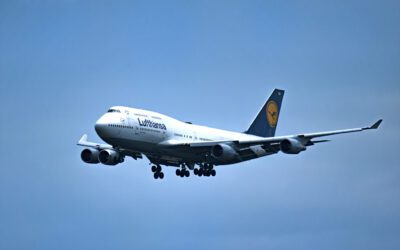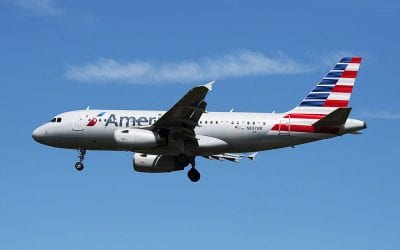Train travel in the United States is experiencing a renaissance. Amtrak’s ridership continues to grow each year, in spite of a skeletal national network, infrequent service to many places, and aging equipment, as travelers seek a reprieve from the costs and hassles of flying and driving. If you’re thinking of taking your first intercity train trip (or your first in a long time), or ride trains infrequently and want to know how to get a better deal, here are a few pointers from an Amtrak veteran:
1) Book early to get the best fares: The key is to book your reservation as far in advance of departure as possible. Like the airlines, Amtrak uses a bucket pricing system, so that once a certain number of seats or sleeping car rooms sells, it kicks the next group of seats or rooms into a higher fare bucket. Unfortunately, Amtrak does not appear in any fare aggregators or online booking agencies like Expedia and Priceline, so reservations must be booked at www.amtrak.com, by phone (1-800-USA-RAIL), with a ticket agent at staffed stations, or at a QuikTrak ticket vending machine. And the only way to compare multiple departure dates on the same screen is to use the AmSnag tool, which doesn’t always work properly.
One great thing about Amtrak is that its reservation change and cancellation policies are much more generous than those of airlines, giving you the peace of mind to go ahead and book a lower fare now knowing that you’ll be able to make changes later. Most fares are fully refundable if canceled up to 24 hours before departure (7 days before departure for sleeping accommodations). For nonrefundable fares, or cancellations made within 24 hours of departure, the full fare is converted to an eVoucher redeemable for future ticket purchases. Business Class and Acela First Class fares are refundable until time of departure. And if you no-show, you get an eVoucher (except for sleepers, in which case you forfeit your fare). You can also change your reservation up until time of departure with no penalty, and if the new fare is lower, the difference is refunded to your credit card or (if within 24 hours or the original fare is nonrefundable) converted into an eVoucher.
2) Pack freely: Amtrak allows up to 2 pieces of carry-on luggage not exceeding 50 pounds, excluding “personal items” such as briefcases, purses, and laptop bags (but not backpacks, which do count against the 2-piece limit). And where checked baggage is available (only at staffed stations on certain routes, indicated by the suitcase icon in the System Timetable), each passenger may check up to 3 bags (not exceeding 50 pounds) free of charge, with fees applying for additional bags (up to 5 per passenger) or bags heavier than 50 pounds. If you check luggage, be sure to hold on to the claim check as, unlike the airlines, Amtrak will use it to make sure your bag is yours when you claim it at your destination. Also, be sure to check your bag no less than 30 minutes before departure, and allow up to 30 minutes after arrival to claim it.
3) Make the most of Amtrak Guest Rewards: Amtrak’s loyalty program is more generous than many airlines’ frequent flyer programs. It’s free to join at www.amtrakguestrewards.com, and you earn 2 points for every dollar spent on Amtrak tickets, with a minimum of 100 points per segment, and a maximum of 4 point-earning segments per calendar day. The amount of points required for a free trip ranges from 1,500 on certain short-distance routes, to 5,500 for coach within 1 zone, to 15,000 for a Roomette within 1 zone, all the way up to 60,000 points for a Bedroom across all 3 zones. (The country is divided into East, Central and West Zones, along with a Northeast Zone within the East Zone, with lower redemption requirements.) When you redeem points for a Roomette or Bedroom, you can add a second person to share your accommodation for no additional points, and all your dining car meals are included. And you can change or cancel award reservations until time of departure with no penalty and get points redeposited to your account.
4) Enjoy a hotel room on rails: Amtrak’s sleeping cars on 14 long-distance routes offer an unparalleled way to relax across the country. Each room accommodates either 1 or 2 passengers (except for Family Bedrooms, which accommodate up to 4, but do not have their own restroom). Roomettes are arranged across a center aisle from each other, with 6.5-foot-long bunk beds parallel to the window. On single-level trains (those that serve New York Penn Station), Roomettes have a toilet and sink in the room, but on bilevel trains (all those that don’t serve New York Penn), there is a restroom down the hall. Bedrooms have larger bunk beds that are perpendicular to the window, with the aisle on one side of the train, and have a private toilet/shower compartment and sink. Beds fold up into reclining chairs (in Roomettes) or a couch with facing chair (in Bedrooms) during the day. Wheelchair-accessible bedrooms are also available. All meals served in the dining car are included in the accommodation charge for sleepers (with the exception of alcoholic beverages), but if you’re in a sleeper, you can bring your own alcohol and consume it in your room. If you share a room with another passenger, only one accommodation charge applies, though both passengers have to pay the base rail fare (equivalent to the lowest bucket coach fare for that segment).
5) Business Class is hit or miss: As I explain in this column for Trains Magazine, there is a lot of variation in terms of what you get in Business Class between different Amtrak routes. In short, I consider Business Class to be worth the extra fare on the Carolinian, Palmetto, Vermonter, corridors emanating from Chicago, Pacific Surfliner and Cascades, as well as overnight Boston-Newport News Northeast Regional trains 66 and 67. And if you’re willing to splurge, First Class on Acela Express includes a full meal served at your seat and unlimited alcoholic beverages.
6) Take advantage of Amtrak’s Thruway buses to extend the reach of the rail network: Amtrak trains serve just over 500 stations throughout the country, but there are around 200 more destinations that are accessible by connecting buses, operated by various independent firms under contract with Amtrak. Some Thruways (as are most in California) are exclusively for Amtrak passengers, whereas others are routes operated by Greyhound or a regional motorcoach carrier that sells its own tickets, but reserves a certain number of seats for Amtrak passengers. Most Thruways are full-sized motorcoaches with reclining seats, on-board restrooms, and many are equipped with WiFi and power outlets. Some, however, are short-haul van services. Connections between trains and Thruways are guaranteed — the Thruway will usually wait for your train to arrive, and if you miss your connection due to a late bus or train, it is Amtrak’s responsibility to re-accommodate you. Thruway schedules are included in the Amtrak System Timetable.
7) Sit back and enjoy the ride: Part of the beauty of train travel is the opportunity to unwind and unplug, experience the breadth of the country’s landscape, catch up on books or magazines, take time to think, and socialize over meals with fellow travelers. However, if you wish to stay productive or connected while traveling, there is no limit to the use of electronic devices on board. Power outlets are provided (at coach seats and in sleeper rooms), WiFi is available on short-distance trains, and you can bring a personal hotspot device.
In my next post here, I’ll take a look at other train travel opportunities in the US and Canada, including tourist and excursion railroads and commuter and regional transit trains.

I am a writer, researcher, multimedia communications professional, and photo/videographer.
I am focused on achieving sustainable economic development and human-scaled communities through a robust multi-modal transportation system centered around a network of high-performance local, regional, and inter-regional passenger trains and frequent and reliable rail transit (streetcars, light rail, commuter rail and subways/metros).



